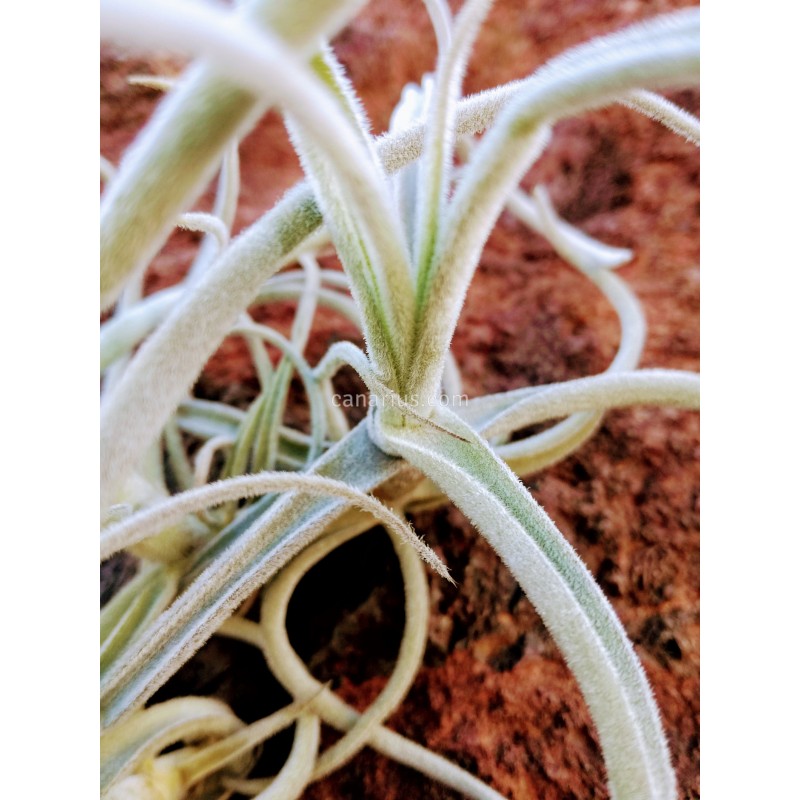Tillandsia Streptocarpa
Tillandsia streptocarpa is a fascinating plant that captures the attention of many gardeners due to its unique features and versatility. Not only is it low-maintenance, but it also boasts impressive air-cleaning abilities. In this article, we'll explore the ins and outs of this remarkable species and learn why it deserves a spot in your garden.
Pain Points of Tillandsia Streptocarpa
Although tillandsia streptocarpa is a fascinating plant, it does come with its share of challenges. One common pain point is its sensitivity to water. This plant requires sufficient moisture to thrive, but overwatering can lead to rotting. Additionally, finding the right balance of light and shade can be difficult, as too much direct sunlight can damage the plant's leaves.
The Target of Tillandsia Streptocarpa
The target of tillandsia streptocarpa is broad, as this species can thrive in various climates and environments. It is a popular choice for indoor gardening, as it can survive in low-light conditions and still purify the air. Additionally, tillandsia streptocarpa is a common choice for landscaping in warmer climates, and it can be grown in gardens, rockeries and even on trees. Due to its unique ability to extract nutrients and moisture from the air, it can also be grown as an epiphyte.
Summary of Main Points
In summary, tillandsia streptocarpa is a versatile and low-maintenance plant that can be grown in various environments. Although it requires some attention to water and light, it has exceptional abilities to purify the air and grow in unique ways. In the next few paragraphs, we'll explore the topic in more detail.
Tillandsia Streptocarpa: A Personal Experience
As a gardener, I've always been fascinated by tillandsia streptocarpa due to its unique qualities. I decided to grow one in my indoor garden and was pleasantly surprised by how easy it was to care for. Its roots began to take hold on a piece of driftwood, and the plant started blooming magnificent flowers.
Tillandsia streptocarpa is an exceptional plant due to its ability to extract nutrients and water from the air. To ensure that it thrives, I made sure to mist its leaves and roots daily to provide the required moisture. Additionally, I placed it in a spot where it received filtered light to avoid any damage to its leaves.
One interesting thing I observed about tillandsia streptocarpa is the way its leaves change colour depending on the amount of light it receives. The leaves turn green when it's in shaded areas but become slightly reddish when exposed to direct sunlight. This makes it a perfect addition to my indoor garden as I can easily move it around to different spots.
Tillandsia Streptocarpa: Growing Tips and Tricks
When it comes to growing tillandsia streptocarpa, there are a few tips and tricks to ensure its success. Firstly, ensure that the plant is not overwatered as this can lead to rotting at the roots. Secondly, ensure the plant receives sufficient moisture by misting it frequently. Lastly, ensure that it's placed in an area where it receives filtered light to avoid any damage to its leaves. Following these tips will help you grow a healthy and vibrant tillandsia streptocarpa.
Tillandsia Streptocarpa and Air Purification
Tillandsia streptocarpa is a great choice for indoor gardening as it has impressive air-cleaning abilities. Due to its unique ability to extract moisture and nutrients from the air, it can filter out harmful toxins and chemicals, making it a perfect addition to any indoor garden. Additionally, it also helps regulate humidity levels, making it ideal for those with allergies or respiratory issues.
The Beauty of Tillandsia Streptocarpa Flowers
Tillandsia streptocarpa is known for its stunning flowers that bloom in bright pink hues. The flowers bloom on long stalks, making them a beautiful addition to any garden. Additionally, the flowers are long-lasting and can bloom for up to three months, adding a splash of colour to your garden for an extended period.
Tillandsia Streptocarpa: Question and Answer
Q: Can tillandsia streptocarpa thrive in low-light conditions?
A: Yes, tillandsia streptocarpa can thrive in low-light conditions, as it can extract nutrients and moisture from the air.
Q: Is it necessary to fertilize tillandsia streptocarpa?
A: Fertilizing is not necessary. However, you can apply a light mist of orchid fertilizer once a month to support blooming.
Q: How often should you water tillandsia streptocarpa?
A: Watering frequency varies depending on the environment. However, misting the leaves and roots daily is sufficient to provide the required moisture.
Q: Can tillandsia streptocarpa grow on other surfaces apart from driftwood?
A: Yes, tillandsia streptocarpa can grow on various surfaces, including tree branches, rocks, and other plants. This makes it an attractive and versatile addition to any landscape.
Conclusion of Tillandsia Streptocarpa
Tillandsia streptocarpa is a remarkable plant that deserves a spot in any garden. With its impressive air-cleaning abilities and unique growing habits, it's a great addition to any indoor or outdoor garden. By following the tips and tricks outlined in this article, you can grow a healthy and vibrant tillandsia streptocarpa that is sure to be the envy of your friends and family.
Gallery
Bromeliads In Australia - Tillandsia Streptocarpa
Photo Credit by: bing.com / tillandsia
Bromeliads In Australia - Tillandsia Streptocarpa
Photo Credit by: bing.com / tillandsia
Tillandsia Streptocarpa 'Orchid' - Bird Rock Tropicals

Photo Credit by: bing.com / tillandsia tropicals
Tillandsia Streptocarpa - Tillandsie
Photo Credit by: bing.com / tillandsia tillandsie visualizza
Buy Tillandsia Streptocarpa With Canarius

Photo Credit by: bing.com / tillandsia canarius plants
0 Response to "Tillandsia Streptocarpa"
Post a Comment